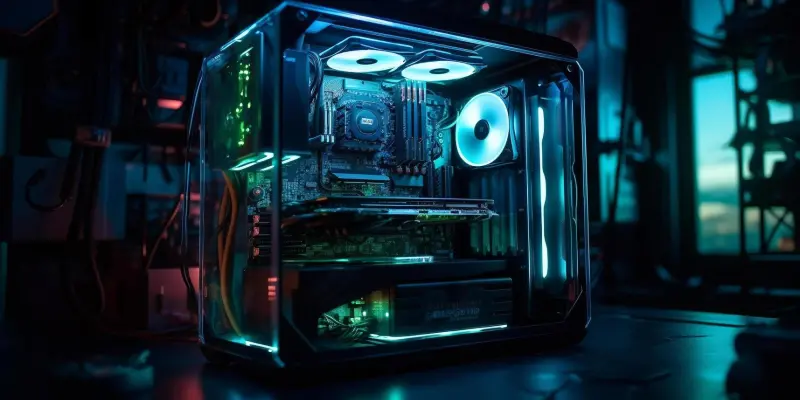The GAMEMAX Blade Concept Limited Edition ATX chassis has sparked conversations within the PC building community due to its innovative and open-air design. Inspired by the power and elegance of lions, this chassis aims to attract PC builders and gamers who prioritize both cooling potential and visual appeal. The spacious interior of the Blade Concept accommodates high-end GPUs up to 400mm, but it places a restriction on CPU coolers to 105mm. This limitation is likely influenced by the chassis’s focus on all-in-one (AIO) coolers, though its open-frame design without a side panel should technically allow for the use of taller air coolers. The Blade Concept aims to raise the bar, not only in design aesthetics but also in performance capabilities, marking a significant step forward in the evolution of PC case design.
Design and Functionality
The Blade Concept showcases a commitment to precision, employing advanced manufacturing techniques like CNC processing and laser cutting. These methods result in a chassis that is not only durable but also visually striking. The use of high-strength nylon weave for the front panel is a particularly noteworthy choice, as it maximizes airflow while also offering some level of dust filtration. However, the very nature of open-air designs means that dust accumulation over time is inevitable. One of the most distinctive features of this chassis is its combination of external and internal structural elements. The metal frame sheets integrated with ARGB lighting give the Blade Concept its unique, attention-grabbing appearance. The smart placement of a 360mm radiator slot behind the motherboard tray further optimizes both space and efficient airflow within the case, showcasing a harmony of style and function rarely achieved.
Market Impact and Considerations
The Blade Concept arrives on the market at a price point of $240.99, which, while competitive, is reflective of its innovative features and limited edition status. Although its availability may vary by location, the broader implication is the introduction of a trend that sees PC case manufacturers increasingly pushing past traditional boundaries. By focusing on aesthetics and enhanced cooling capabilities, the GAMEMAX Blade Concept could set a precedent for future case designs. While not highly modular, the addition of swappable I/O panels demonstrates an awareness of user demands for modern peripheral connectivity, offering USB Type A Gen 3.1 and USB Type C Gen 2 ports. This ability to cater to contemporary needs is critical in ensuring long-term relevance in an ever-evolving tech landscape. Through the lens of the Blade Concept, the future of PC case design may very well lean towards more adventurous, visually appealing, and functionally robust configurations that cater to the growing demands of PC enthusiasts.

